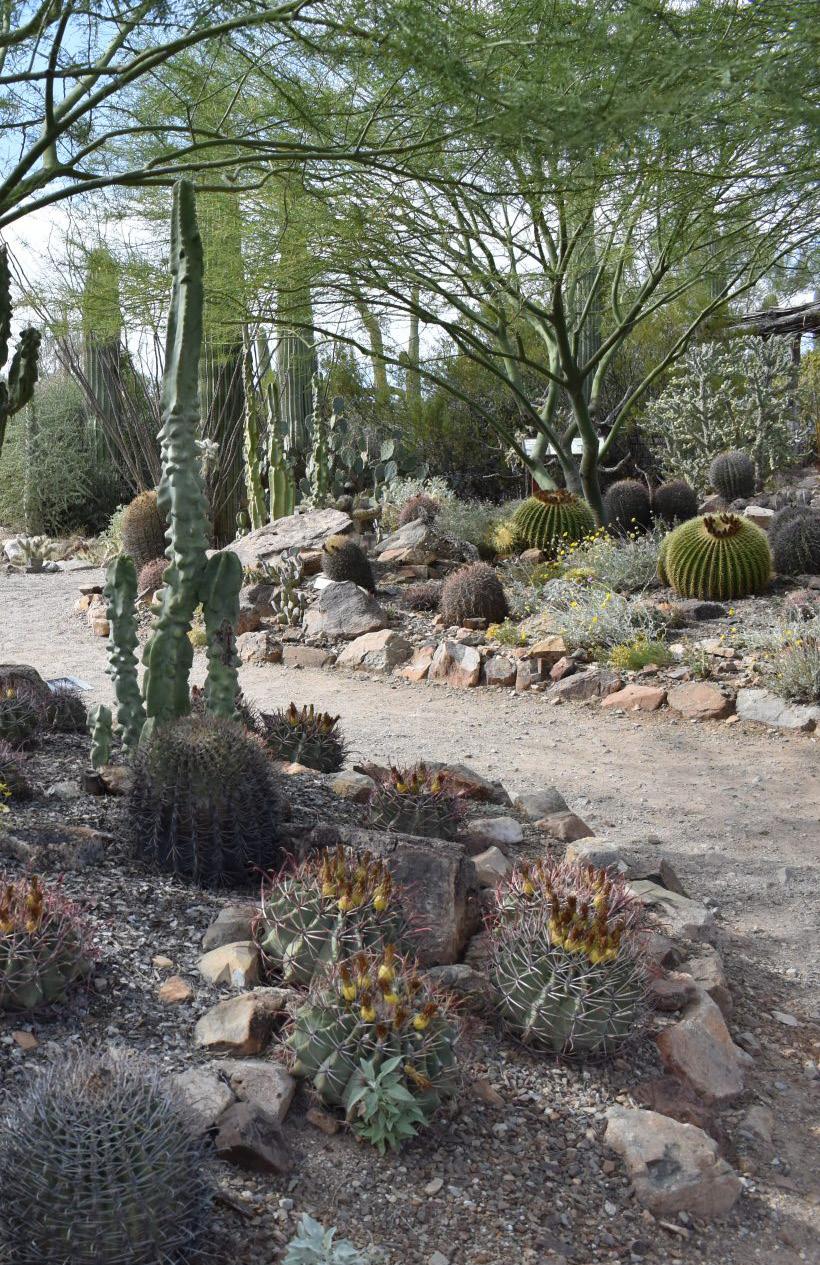
2 minute read
Things To Do
This world-class attraction immerses you in the diverse beauty of the Sonoran Desert, showcasing the plants, animals and geology of this fascinating region. Housing not only a museum, but also a zoo and botanical garden, it is a truly unique place to find the out of the ordinary.
This is not an ordinary zoo. Nor is it an everyday botanical garden. And it’s definitely not your run of the mill museum. So what is it?
Advertisement
The Arizona-Sonora Desert Museum is a world-renowned zoo, natural history museum and botanical garden, all in one place. For over fifty years the Arizona-Sonora Desert Museum has enchanted millions of visitors with its exhibits of live animals in astonishingly natural settings, while intriguing and instructing them with fascinating educational programs. At the same time, the Museum has gained a worldwide repute in the scientific community as an institution committed to researching and protecting the land, plants and the animals of the Sonoran Desert region.
The mission of the Arizona-Sonora Desert Museum is to inspire people to live in harmony with the natural world by fostering love, appreciation and understanding of the Sonoran Desert. Exhibits recreate the natural landscape of the Sonoran Desert Region so realistically you find yourself eye-to-eye with mountain lions, prairie dogs, Gila monsters and more. Within the museum grounds, you will see more than 300 animal species and 1,200 kinds of plants. There are almost 2 miles of paths traversing 21 acres of beautiful desert.
Located just fourteen miles west of Tucson on 21 acres of the Sonoran Desert, it is home to over 2,700 native animals, 1,200 types of flora and fauna and 14,000 rock and mineral specimens and is the nation’s leading outdoor living museum. Enclosed behind Invisinet, a special mesh that is strong and safe, but still transparent so that photos may be taken, magnificent mountain lions, javelinas and bighorn lambs run wild in their natural habitats. In addition to the larger mammals, the scaly, six-legged creatures seeking shelter from the desert sun can also be found in settings of their own in a unique cutaway exhibit, called Life Underground.
The Museum is also home to the Coati Exhibit, which features an ensemble of creatures hunting for food in a recreation of the remarkable Sycamore Canyon located on the ArizonaMexico border, truly earning its place in the world’s Top Ten Zoological Sites. At certain times of the year, birds of prey can be seen in the Raptor Free Flight Program, living in the wild, and birds can be seen only inches away in the Walk-In Aviary all year round. While many people think the desert is all cacti and dirt, the Desert Museum proves them wrong with their Desert Grassland exhibit, featuring prairie dogs, and Riparian Corridor with underwater beavers and otters. In the Hummingbird Aviary, an eternal buzz and whir of activity surrounds visitors as these tiny birds busy themselves with chores.
Much more than a museum, the Earth Sciences Center is a desert cave containing one of the largest collections of breathtaking gems and minerals to be found in a single area. Vivid pollinator gardens attract butterflies almost year round, constantly providing a feast for the eyes. All of this is set against a desert landscape backdrop littered with cacti of all shapes and sizes, including the unusual boojum.
For more information visit the website at desertmuseum.org.





